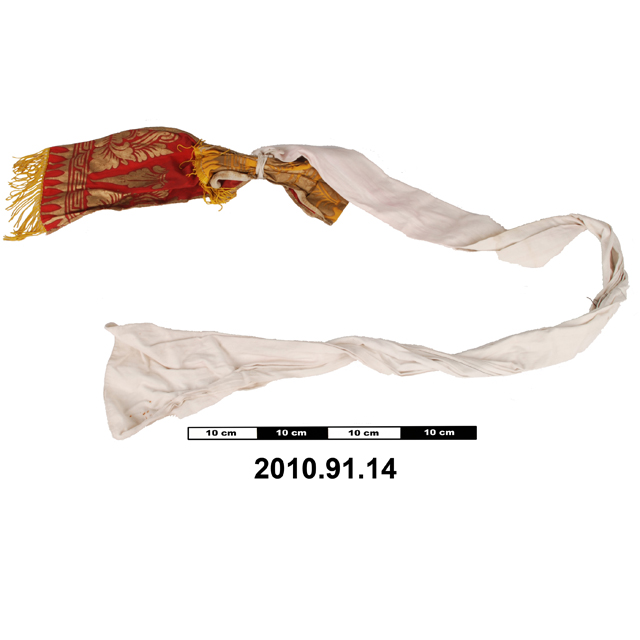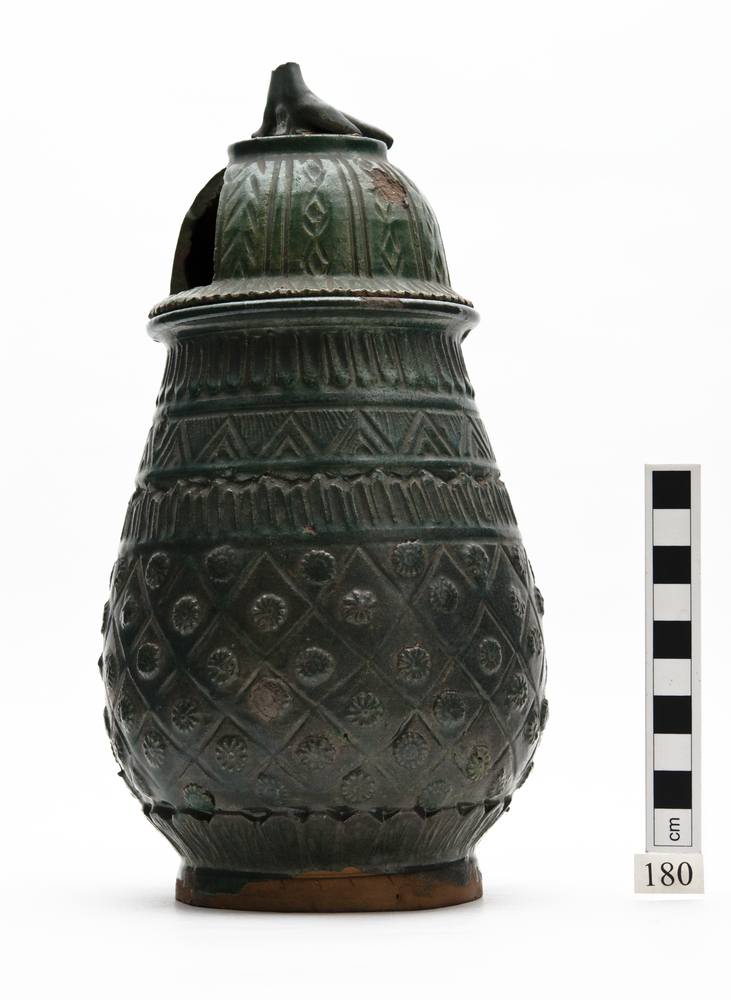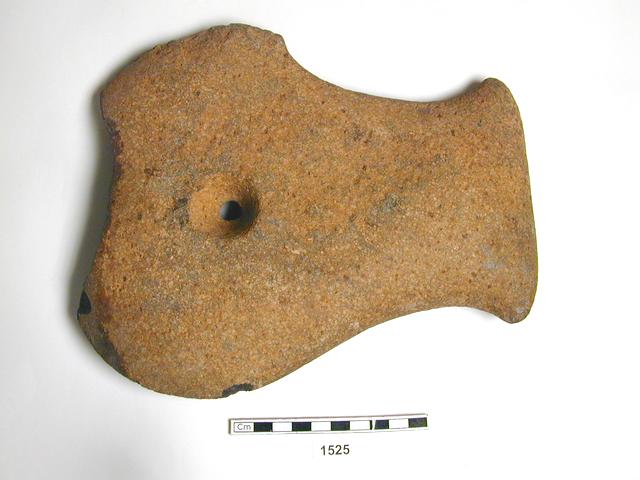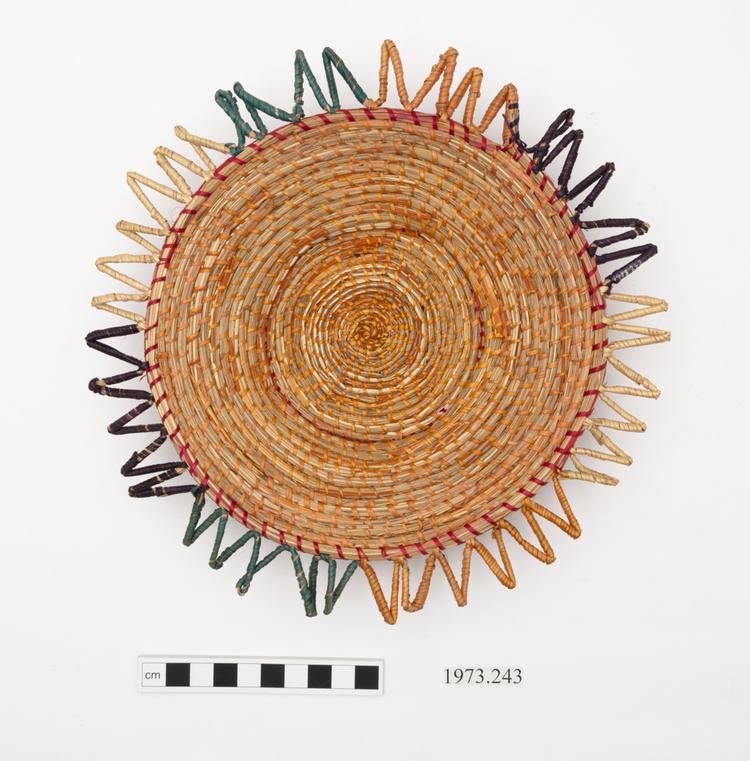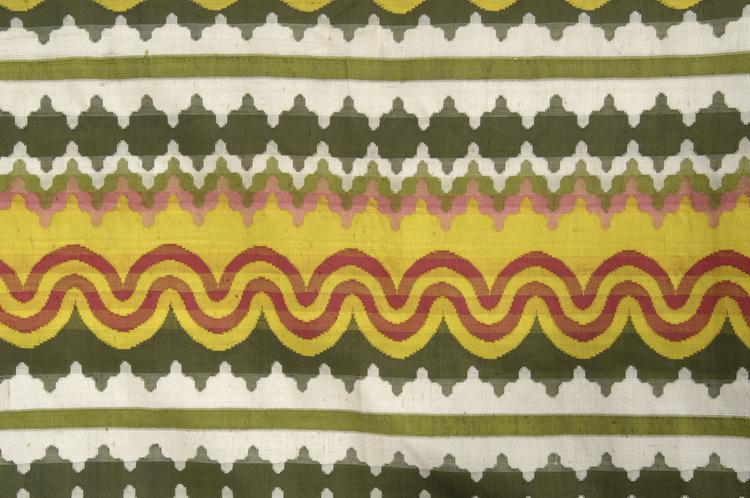
A very long silk skirt cloth. It has red, white, lime green and dark green stripes which are clearly visible in a large chequered border at each warp end. These stripes appear more diffuse in the rest of the cloth where multicoloured wefts are introduced. The cloth has four identical bands (as worn). Each one comprises two yellow and two red undulating lines. This pattern is known as 'Lei-sin-gyo' (or 'four stripes'). There is also a band of linked green ogee motifs, and bands of white, green and pink zig zags. The latter pattern is known as 'Pei-lein' (satin weave). The wefts are inserted in a tapestry style technique, but the fabric overall is weft dominant, not weft faced. This technique is called the 'lun-taya' (hundred spool) method or, alternatively, the 'acheik' technique. [Textile] (Note: I suspect this is actually a woman's htamein. FK)



